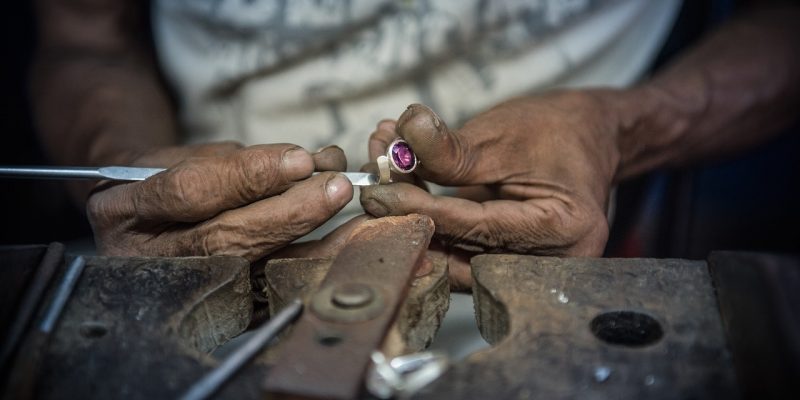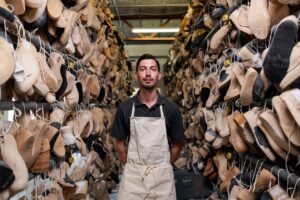Sri Lanka is a fast-growing country, experiencing a 6.4% average annual growth between 2003 and 2012. Within the South Asia region, Sri Lanka is the second wealthiest country, falling just below the Maldives.
The country has several economic sectors that thrive, both as part of the domestic market and through exports. There are many products made in Sri Lanka suitable for trading.
Sri Lanka is one of the few countries to meet the Millennium Development Goal target. Sri Lanka has been able to reduce poverty by at least 50%. In 2002, the poverty rate in Sri Lanka was 23%, declining to a mere 9% in 2009.
In 2018, Sri Lanka’s GDP was $88.9 billion. Sri Lanka was 65th for nominal GDP in 2019, along with the 58th for PPP GDP. Sri Lanka has a $3,947 nominal GDP per capita and a $13,897 PPP GDP per capita, reported in 2019.
Several products are made domestically in Sri Lanka, many of which exported to other countries.
Sourcing outside China Guides
This post is part of a series on Alternatives to China for Sourcing, to see our 13 other recommendations check out this article: Product Sourcing Outside China // 13 Best Alternatives to China Manufacturing
Popular Products Made In Sri Lanka
There are several products that we can turn our focus to when looking at products made in Sri Lanka. The country is well known as a tourist spot, with thousands visiting Sri Lanka every year. Beyond tourism, there is more to Sri Lanka’s economy. There are several products that factories and manufacturing facilities in the country make, many of which exported to other countries.
Tea, apparel, textile, and even rice production are all commonly found throughout Sri Lanka. We take a closer look at some popular products made in Sri Lanka.
Environmentally Friendly Products and suppliers in Sri Lanka
Sri Lanka has made it a priority to produce more environmentally-friendly products. Companies producing products that need packaging can look to Sri Lanka for eco-friendly packaging solutions. This type of movement can be beneficial for the business – as many consumers are starting to support companies that are going “green” compared to those with no action to become environmentally friendly.
Even the Sri Lanka Export Development Board has announced the importance of producing packaging and even printing materials that can be recycled.

Tea Suppliers in Sri Lanka
When it comes to trade in Sri Lanka, tea production and exports are what Sri Lanka is most famous. Tea production and exports account for about 2% of the GDP in Sri Lanka. This sector contributes more than $1.5 billion to the Sri Lankan economy every year. Over one million people employed, both indirectly and directly, through the tea production sector in Sri Lanka.
There is a large variety of teas that are produced domestically within Sri Lanka. Some of these teas include Ceylon black tea and Ceylon green tea. Ceylon white tea has also become rather popular, often referred to as silver tips. The Ceylon white tea reaches for premium prices. The white tea produced in Sri Lanka is always hand-rolled. It is also withered directly in the sun. The sun-drying creates a distinctive taste.
Another type of tea product that is produced locally in Sri Lanka is known as Virgin White Tea. It is grown at the famous Handunugoda Tea Estate. The estate located in the South part of Sri Lanka.
Apparel & Textile
The most significant contributor to Sri Lanka’s economy is the apparel and textile industries. Sri Lanka also depends on the success of these sectors to ensure the country’s ability to advance its economy. An estimated 50% of all exports from Sri Lanka are related to the country’s apparel and textile sectors. About 15% of the Sri Lankan workforce employed within these sectors.
Sri Lanka holds the biggest export of apparel and textile goods trade partnerships with the United States. About 76% of all these items exported go from Sri Lanka to the United States. Sri Lanka also developed logistic centers at several ports in the United States within the year 2000.
MAS is the most prominent firm that is part of the apparel industry in Sri Lanka. MAS is a supplier of many fashionable clothing and textile brands. Some examples include Marks and Spencer, Victoria’s Secret, Gap, and Nike.
The apparel industry in Sri Lanka does not only cater to brand names. Several manufacturing facilities in the country offer business owners an opportunity to gain access to private contracts related to clothing and textile manufacturing.
Resellers can purchase clothing, footwear, and other types of textile products from bulk manufacturers in Sri Lanka. Alternatively, it would also be possible to develop custom contracts with these companies. In turn, it would allow a company to gain access to custom clothing that can prepare for them.
Agriculture
Agriculture forms a significant part of the economy in Sri Lanka. With this in mind, it is no wonder agriculture products are one of the biggest exports from the country.
Tea forms part of the agriculture sector in Sri Lanka, but several other areas make up the massive agriculture industry in the country.
Rice production is at the top of the list when looking at agricultural products made in Sri Lanka. During both Yala and Maha seasons, rice is a popular agricultural product that grows in the country.
Two major agriculture parks exist in Sri Lanka. These parks are responsible for the majority of agricultural products made domestically. A significant amount of agricultural products cultivated in these two parks provided as exports to other countries.
Fisheries and forestry departments in the farming sector within Sri Lanka account for about 18% of the country’s GDP.
Other Products Made In Sri Lanka
Agriculture and apparel are the two major markets when looking at products made in Sri Lanka. The export potential for agriculture and clothing is especially the case when you consider export opportunities from the country. There are, however, quite a few other products that you can source from factories and manufacturing plants located in Sri Lanka.
A few examples of additional products that are made domestically in Sri Lanka include:
- Oilseed crops and products (sesame seeds, mustard seeds, groundnut seeds, and more)
- A range of fruits and vegetables (tropical fruits, as well as bitter gourd, sweet bananas, queen pineapple, gherkins, and more)
These are only a few examples of export opportunities presented by Sri Lanka.
Conclusion
With Sri Lanka’s economy multiplying, there are many export opportunities for businesses from other countries. Sri Lanka Produces a large variety of products domestically and exports them at affordable rates. Buyers and brands looking to gain an increase in profit margins have a few opportunities to explore when turning to Sri Lanka.




